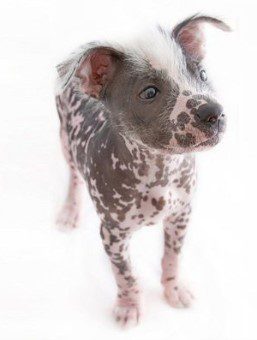

Wool blend allergies in dogs may cause a variety of symptoms, including red and itchy skin, swollen and irritated eyes, frequent licking and chewing, and hair loss. In some cases, the allergy may cause respiratory issues, such as wheezing and sneezing.
Wool blend allergies in dogs are typically caused by an abnormal reaction to the proteins found in wool fabric. Dogs may also be allergic to the detergents used to wash the wool. In some cases, the allergy may be caused by dust mites, insects, dander, or pollen that has become trapped in the wool fibers.
The diagnosis for wool blend allergies in dogs typically begins with a physical exam and allergy testing to determine if there is an allergic reaction. A veterinarian may also take a skin scraping or biopsy if there is a suspicion of a bacterial or fungal infection, and blood tests may be done to to check for an underlying problem or to rule out other causes. Additionally, an ultraviolet light may be used to ensure all fleas and other parasites have been identified.
Wool blend allergies in dogs can be quite serious if left untreated, as it can result in a number of symptoms that can cause discomfort and distress for the animal. Furthermore, if the allergy leads to respiratory issues, it may pose a serious health risk for the animal and potentially lead to death. The mortality rate for this allergy if it remains untreated is not known.
Treatment for wool blend allergies in dogs typically includes the administration of antihistamines and corticosteroids, along with avoidance of the offending fabric or material. In cases of severe reactions, antibiotics and other medications may be necessary. In some cases, it may be recommended to switch to a hypoallergenic diet or other food sources that contain fewer relevant allergens.
To prevent wool blend allergies in dogs, it is important to only purchase pet accessories, bedding, and clothes that are made of 100 percent natural materials like cotton, hemp, wool, or linen. You should also avoid products that contain any chemical fire retardant or dyes that might trigger a reaction or allergy in your pet. Additionally, regular grooming and bathing can help reduce the amount of allergens that get on the dog’s coat and skin. Finally, it is important to keep an eye on your pet for any signs of an allergic reaction and take them to the vet if necessary to get tested.
Dog allergies to wool blends are not contagious, and they cannot be passed to humans. However, it is possible for humans to have an allergic reaction to their pet’s dander and saliva, so it is important for anyone in contact with an allergic animal to take proper precautions.
Home remedy options that may help to manage the allergy symptoms in dogs include frequent bathing and cleaning the house regularly to reduce allergens. Additionally, owners may wish to feed their dogs a hypoallergenic diet, as well as groom the dog periodically to remove any potential allergens from their coat.
While these home remedy options may help to manage your dog’s allergies, we advise you to consult with a veterinarian for the best advice on alleviating your dog’s symptoms. Remember, no single solution works for every dog, so working with a qualified professional is key to finding the remedy that is right for your pet.
Certain breeds of dogs are more vulnerable to allergies from wool blends than others. Such breeds include poodles, bichon frise, shih tzu, Lhasa Apso, yorkies and Maltese. These breeds tend to have sensitive skin that is easily irritated by wool blend materials. Additionally, their dense fur coats can trap the wool fibers, exacerbating the irritation.
Have you ever had your dog experience an allergy to a wool blend? How did you respond, and what did you do to manage the situation? It can be a difficult and stressful experience to have your pet go through, but by staying vigilant and watching for signs of discomfort you can minimize any potential risks. We wish the best of luck with your pup’s care, and hope that they feel better soon!